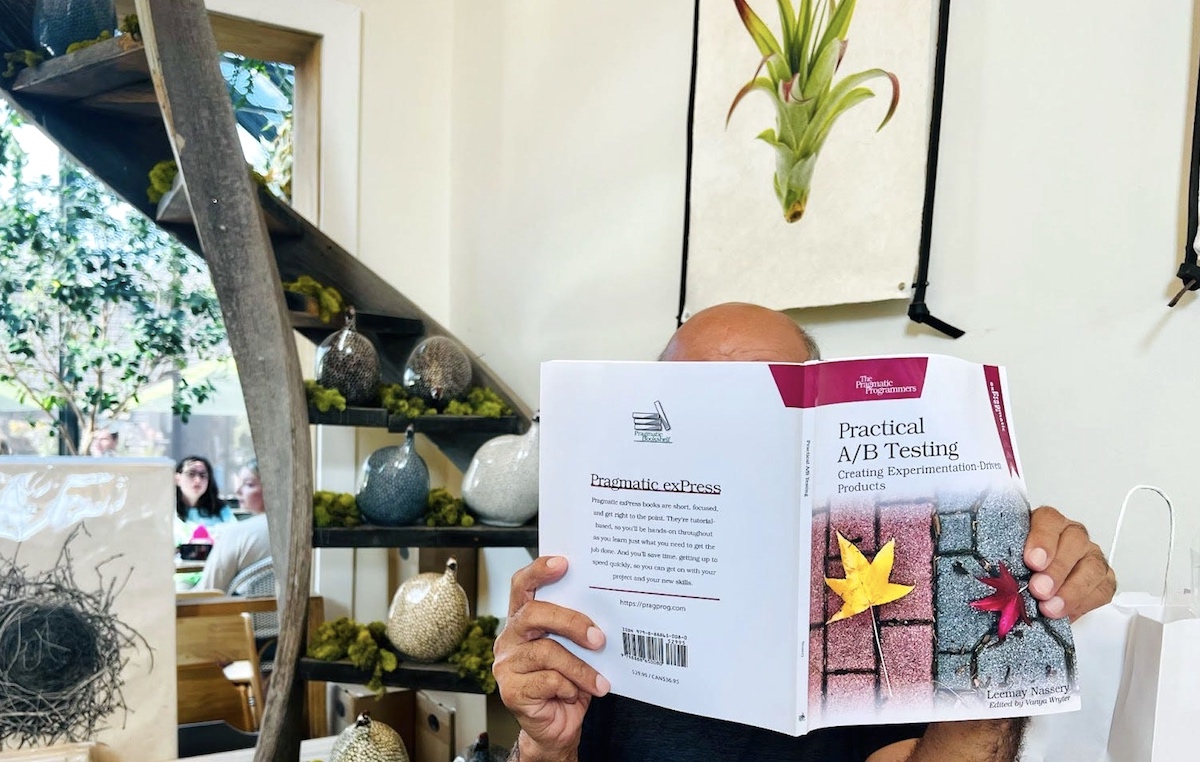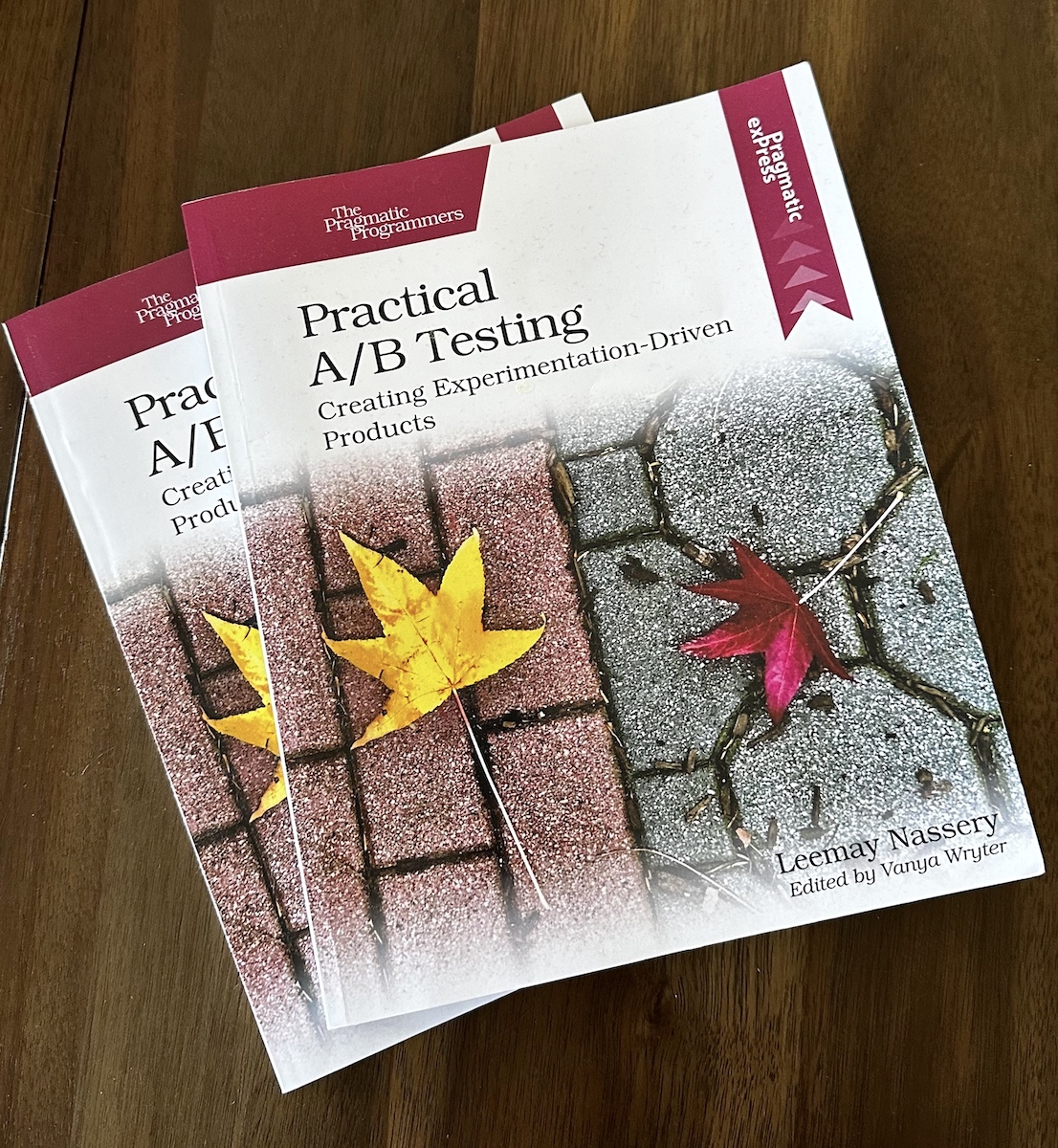As someone who enjoys writing (and reading), I deeply admire anyone who has written a book. Many people say they have an idea for a book, but so few put pen to paper.
There’s a reason for this — writing is hard. Writing an entire book takes a lot of dedication, time, and creativity. It also takes courage to put your idea out there to be critiqued by editors, book reviewers, publishers, and readers.
If you are like me, you may have obsessively looked into what it takes to be a published writer, or more specifically, publishing a technical book. You might be curious about the process, the timeline, or how to get started. If so, I thought it may be helpful to prospective writers to share my experience as someone who finally did it.
First, have an idea
After saying au revoir to my nine-year career working on a video product, I realized many of my experiences were novel. I had launched the video product’s “For You” page with a small engineering team. Beyond the wonderful engineers I had the chance to work with, the catalyst for this product launch was an A/B test. Without this particular A/B test, there’s no chance the “For You” page would have launched.
After reflecting on that experience, I decided to write a book hinged on running experiments on a video product that had just started its A/B testing journey.
Next, write the outline
Once you have a topic, start drafting an outline summarizing each chapter. For pretty much all non-fiction books, including technical books, there’s a template you have to follow to pitch your idea to a publisher. It includes a chapter outline and sample chapters. In the same template, there’s also a section oriented around the author — bio, why you should write this book, etc.

Pitch to a publisher
In this stage, just be prepared for lots of feedback from acquisition editors. After finishing the initial outline and two chapters of my A/B testing book, I decided to make a list of ideal publishers that were well-known in the tech industry. Once I knew who I wanted to work with, I began slowly sending out my book outline, one publisher at a time, receiving sometimes helpful and sometimes not-so-helpful feedback. It’s part of the process; some publishers get your vision, and some publishers say, “No, thank you.”
Sign with a publisher
You’ll sign a contract that includes how royalties work, and a few other legal details. I was always interested in writing with the publisher Pragmatic Programmers, which is also the home to the iconic “The Pragmatic Programmer” book that pretty much the entire industry has read at one point in their careers.
Meet your development editor
Your development editor is your new best friend (hopefully). They’ll help you craft the right tone, flow and writing style that fits the publisher you’re working with.
Once I signed with Pragmatic, I was assigned a development editor who, first of all, is so wonderful — I got really lucky — but second of all was so helpful throughout the experience. We created a general timeline for when each chapter will be due, what the editing process would entail, how feedback will be sent, etc.
Write, write, write
Now that everything is in place, you have a development editor, a publisher and a general timeline, it’s time to start writing!
My A/B testing book is roughly 140 pages within six chapters. I mostly wrote on weekends: I started Saturdays with a run, coffee, and then hours at my desk writing, creating diagrams, doing research, and all the fun stuff that goes into writing a technical book.
Then edit, edit, edit
Once each chapter is written, it’s time for feedback. Feedback included tone of voice, phrasing, writing style, etc. Editing is a different art than writing. In the editing stage, you often cut things out, pasting them elsewhere in a chapter or removing them entirely.
I found the editing process to feel so different from the writing process — it didn’t take as much creativity as writing, but it did require a lot of brain power (and snacking). When you’re writing a technical book, the tone is so important to consider. Some technical books are very “preachy.” The goal with my A/B testing book was to make the book sound like me — positive, you-can-do-this type of attitude. You, too, can run the A/B test of your dreams; you just need to start.
Tech and publication review
The tech review is exactly what you think it is: Folks experienced in the topic review the book and provide feedback. Once this is done, the publication review is the final stage, where the illustration for the cover is created, the preface is written, the interior layout is finalized, and a few other final style tweaks are made. This was when I was most excited. Seeing the book cover and title finalized made it all feel so real!

Beta launch, then print!
You’ve arrived. The book is available for everyone to enjoy. Once a book is available, the publisher and author create a plan to promote the book. Marketing for me included starting a Substack called Experimenting and speaking a few conferences here and there.
Speaking of promoting: If you’re interested in incorporating A/B testing into your product development lifecycle, check out my book titled “Practical A/B Testing.”
###
This whole process of writing a book took me about a year and a half. If you’re considering writing a book, the best advice I can give is to hold yourself accountable — show up to write when you say you will. Writing is similar to running; on days you don’t feel like running, go for a mile, if not your usual longer distance. Now, apply the same logic to writing a book. When you commit to a writing schedule, writing one sentence is better than skipping it entirely.
Good luck! You can do it!







